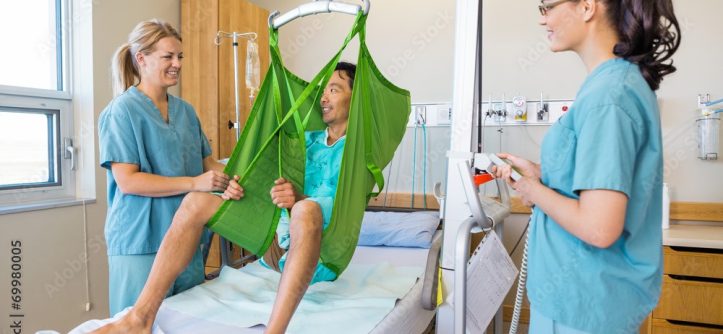There are many ways to make your home a more hospitable place, and a lot of those changes can be made from the comfort of your own living room. In this blog article, you’ll learn how to keep your loved one safe and comfortable as they age with quality patient lift slings from top companies. When you have a loved one in the hospital, it’s natural to want to do anything you can to help them. But what about when they’re not? This article discusses a new product that is helping people take care of their parents and other loved ones at home.

What is a Patient Lift Sling?
A patient lift sling is a piece of equipment that helps to reduce the stress and load on the back and hips during transfer. They are most commonly used in hospitals, care homes, and nursing homes. Additionally they can be used for traveling purposes too. A sling is made of two pieces of material that is tight at the top and goes over your head. It has a broad strap that comes around your shoulders and a narrower strap that goes under your feet. There is a loop on the top of the sling with Velcro straps, which enables caregivers to easily attach it to a hospital bed or something similar.
How to use a Patient Lift Sling
A patient lift sling is a type of sling that aids in the transportation of your loved one who has fallen or is unable to get up without assistance. Patients are lifted up by the sling so they can be moved with relative ease. This type of device can also provide support for an injured person while still allowing them to sit upright. The patient lift sling is perfect for transporting your loved one into or out of bed. You can use it to bring them in and out of bed, to help them get dressed, or just to help them sit up. It makes it easier to move around so they can feel more comfortable.
How to Disassemble and Clean the Sling
One of the most important parts of any sling is how easy it is to clean and maintain. While some slings don’t need cleaning, others often end up needing a good scrubbing. This can be done by submerging the sling in soapy water and scrubbing it with a toothbrush. It’s also important to change the sling every few months as they start to wear out and can break down on you more quickly than expected.
What do Patients and Caregivers Like About the Sling?
One of the most important things patients and caregivers like about the sling is its flexibility. The sling can be molded to fit any shape or size, meaning both people are satisfied with their use. It also allows for a level of intimacy that is very comforting for many people who are recovering from injury or illness.
The Sling provides an easy to use solution for patients who are unable to lift themselves. One of the main features of this system is that it provides caregivers with remote monitoring capabilities. This means that caregivers can monitor their patients from anywhere in the world, providing them with peace of mind that they are well taken care of.
Pros and Cons of a Sling vs. an Arm Brace
A sling is helpful for those with injuries to their upper body. It provides support and can help ease pain. However, an arm brace will provide more support than a sling because it covers the elbow area. It will also help provide stability and reduce motion-induced pain or discomfort.
The arm brace is an important piece of equipment that can help prevent falls and injuries due to weak joints. They are typically made of a hard plastic and come in multiple sizes and lengths. The sling is a soft material that helps support the body and alleviate pressure on joints and muscles. It also provides extra support for the back, neck, and shoulders which is helpful for those with pain or injuries to these areas.
Alternative Uses for a Patient Lift Sisting
These are just some of the many different uses for a patient lift sisting. They come in handy in any situation where you need to perform physical tasks that are difficult for your elderly family members to do by themselves. One day, you will need to start using a patient lift sisting. It can be used in many different ways. For instance, it could be used in the hospital to provide support and mobility for patients who cannot walk or stand on their own, and in the home to allow individuals who are unable to move around independently to move from one room to another.



